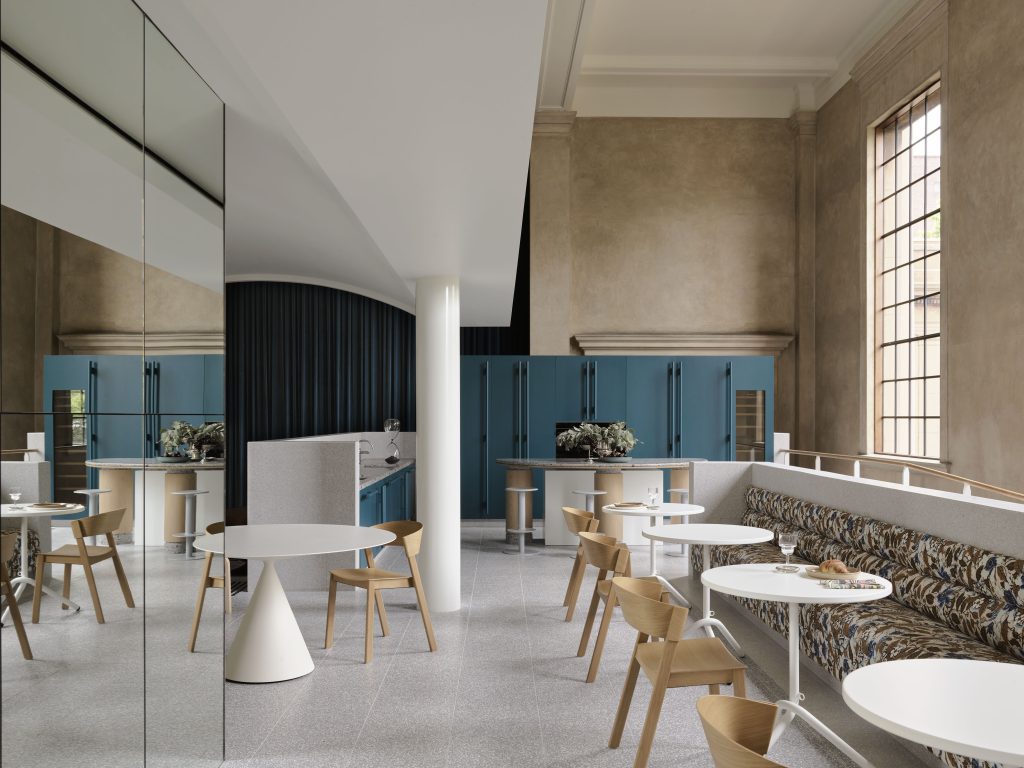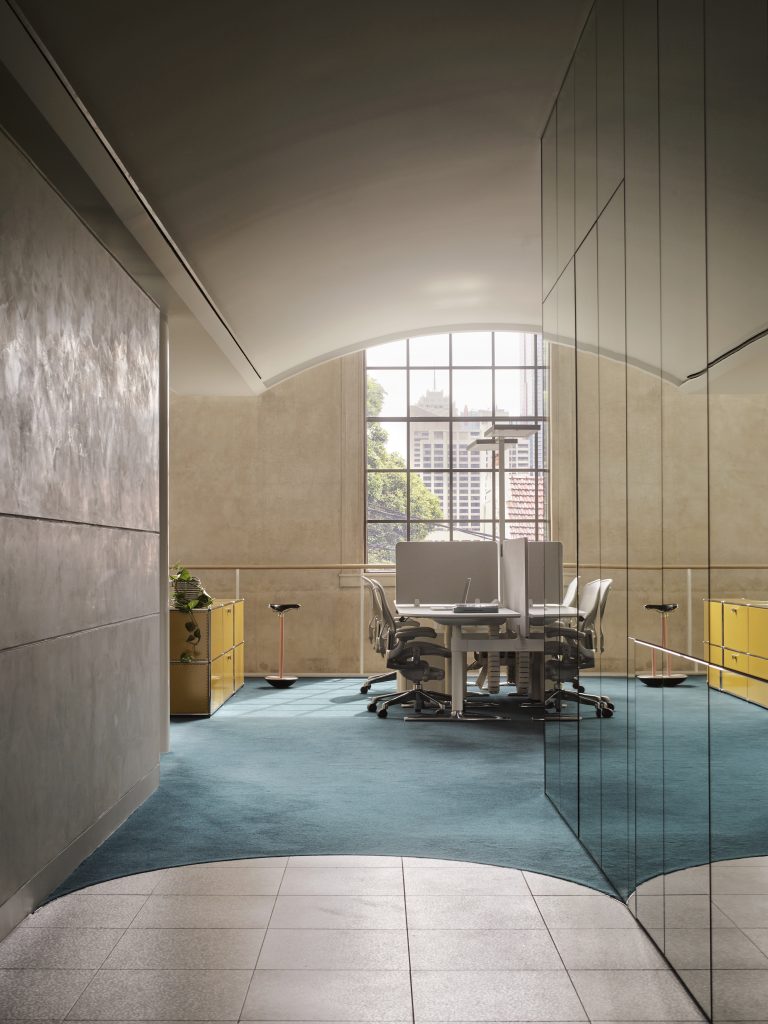
30UNDER30 alum Angela Chun on exhilarating design
Share
Australian Design Review’s 30UNDER30 program provides mentorship and career development in the architecture and design industry, bringing together game-changers, industry leaders, practice founders, product manufacturers, suppliers and sponsors to highlight and empower young architects and innovators of the future.
In celebration of the new ADR 30UNDER30 Architects and Innovators of the Built World stream, ADR talked with the alumni from the inaugural Interior and Product Design stream to discover what they thought about the program.
Optimistic and empowered SJB interior designer Angela Chun possesses a far from linear architecture and design journey, yet this does not diminish her passion and drive to design sustainable and historically rich spaces that make people feel invigorated, alive and energised.
Australian Design Review caught up with Chun to discuss how she saw last year’s inaugural 30UNDER30 as the ideal mixture of enjoyment and motivation, the exhilarating rush of completing her first – and award-winning – Heritage project last year, the crucial need for affordable and accessible tertiary education for architecture and how Australia is embracing the long-awaited privilege of co-designing with Country.

Australian Design Review: How did you first discover your love for design?
Angela Chun: My journey hasn’t been straightforward. When I graduated from high school, I had no clear career path in mind. I stumbled upon a Bachelor of Public Relations course and thought it might be as exciting as Samantha Jones from Sex and the City [made it look]. Unfortunately, I didn’t do enough research and it didn’t ignite my passion. While public relations did teach me valuable skills and benefit my career, it could have been more fulfilling.
I distinctly remember feeling lost and unmotivated after graduating. Then, a turning point came when my best friend invited me to join her in New York. Within a month, I found myself sipping cocktails at the Top of The Standard, participating in nude drawing sessions at Soho House and dining in the private room at Per Se, where waiters emerged through a hidden door.

This experience changed my life. It was exhilarating, and I didn’t want to just visit these spaces, but create them. I yearned for the opportunity to design spaces where others could experience the same invigoration. And here I am, seven years later, pursuing that dream.
Can you explain your career trajectory – the highs and the lows?
My university experience was quite frustrating, although I want to emphasise that I forged lifelong friendships that I hold dear. The course helped me discover a career I’m passionate about, and I was fortunate to have some incredible tutors and life-changing experiences. However, in terms of my well-being, it was far from ideal.
Our course lacked crucial elements like financial support, IT assistance and a mentorship program. On the very first day, the head of the course delivered a daunting message, saying 70 percent of us would not make it through the semester. This was described as a way to select the best candidates. Furthermore, we were strongly discouraged from working while studying.
As it turned out, nearly 60 percent of students did indeed quit. I witnessed highly talented individuals leaving the course because they lived too far, needed to work more than two days a week, had family responsibilities or found the expectations too overwhelming. Their departure had nothing to do with their talent, but was primarily due to their circumstances. This left me disheartened about our industry, but it also ignited a desire to work towards changing our culture.

I believe that SJB embodies a culture and ethos that resonates with my personal and professional objectives. What has kept me committed to this organisation are the directors who relentlessly pursue positive change within our industry. The colleagues I have collaborated with and the projects I’ve been fortunate to be a part of have been both rewarding and occasionally overwhelming. Nevertheless, through these experiences, I’ve recaptured the same exhilaration I felt during my first visit to New York. Where will I be in the future? I have no idea. I will always stay in design, but I would like to try something different – eventually.
Is there a particular project that you’re most passionate about?
Together with my exceptional team, I accomplished my inaugural Heritage project last year. Given my concern about contributing to environmental waste, it was a significant accomplishment to successfully execute a project without resorting to total building demolition. The project’s success felt immensely rewarding. Moreover, I cherished the fact that we were contributing to preserving the historical significance of the building and shaping its future for a good cause.
Our efforts were recognised when the project received the Large Workplace award at the INSIDE World Festival of Interiors. Additionally, we secured a recent victory in the category of adaptive reuse at the Sustainability Awards.
How do you feel Australian Design Review’s 30UNDER30 program developed your connection to the industry?
Working for a firm can sometimes be insular, as you mainly interact with your immediate team and not much beyond that. However, my participation in the 30UNDER30 initiative opened up opportunities to establish connections that I otherwise would not have made. It brought together designers from all across Australia, fostering incredibly fulfilling relationships.

In what ways did you find the program differed from other industry events you have engaged with?
The program distinguished itself from other industry events I’ve attended in several significant ways. Its exceptional organisation, combined with the perfect blend of enjoyment and motivation, set it apart from other events.
Moreover, the mentoring aspect of the program was truly incredible. It provided the invaluable opportunity to connect with professionals who had already traversed this journey, offering immensely helpful guidance and insights.
What stands out from your experience at Potato Head in Bali?
The place offers a variety of amenities, including different bars and restaurants. It’s awesome because you can enjoy different vibes in one spot.
The architectural design of Potato Head is nothing short of remarkable. It beautifully captures the essence of Bali’s charm and culture, making it a standout in terms of design.
Additionally, the interior design complements the overall aesthetic of the venue and adds to the immersive and stylish atmosphere, enhancing the overall experience for guests.
I was also impressed by Potato Head’s commitment to sustainability. They’re doing some cool stuff by creating accessories from plastic washed up on the beach, showing dedication to preserving Bali’s natural beauty and making a positive impact on the environment.

How do you feel about the current design landscape in Australia? Can you identify strengths and shining moments, but also weaknesses and areas of improvement?
Our industry is evolving rapidly and the technological advancements are both thrilling and daunting. It keeps things exciting and challenges us to adapt. Our design community is truly one of a kind, filled with unique and highly intelligent individuals who bring their creativity to the forefront.
In terms of areas of improvement, there’s a need for universities to provide affordable education that allows students to explore their own style. It should also support students in balancing work and study, and offer mentoring and guidance. Also, it’s essential we offer support to designers who are underpaid and overworked, ensuring they receive fair compensation for their contributions.
Projects within Australian design are a testament to the remarkable talents of both established and up-and-coming Australian designers. One crucial aspect that has garnered recognition in the design community is the principle of showing respect to Country. As designers, we’ve come to understand that we are mere custodians of this land, and our designs must pay homage to the land’s history, its current state and its future. While there’s still more work to be done, the shift towards embracing this mindset is a positive and encouraging change.
Photography supplied by Angela Chun.
Australian Design Review’s 30UNDER30 Architects and Innovators of the Built World stream is brought to you by major sponsor Neolith, alongside Miele and Tongue & Groove.
The program is supported by practice partners BVN, HDR INC, SJB, Richards Stanisich, Williams Burton Leopardi and Billard Leece Partnership.
Check out the program here!
Read about another 30UNDER30 alumnus Lia Pipolo.
















